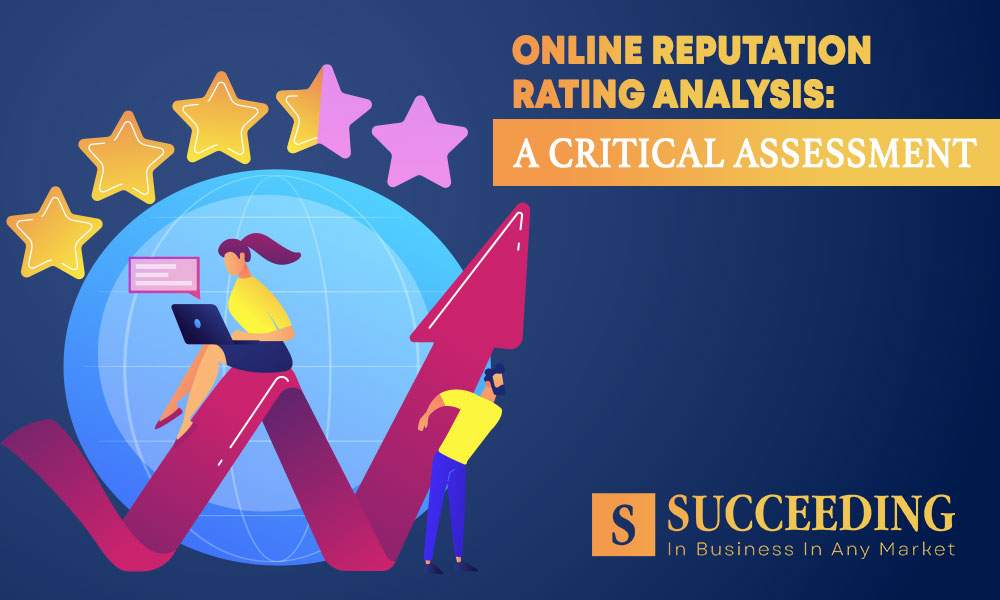Post Date: June 8, 2023

When it comes to buying a business, being aware of the red flags is crucial to making a sound investment decision. Understanding the potential risks and pitfalls can help you navigate the acquisition process with confidence and increase your chances of long-term success. In this article, we will explore the key Red Flags When Buying A Business and provide valuable insights to guide you on your path to entrepreneurship.
Before delving into the red flags, it’s worth mentioning the wisdom of renowned author and speaker Brian Tracy. With his extensive knowledge in personal and professional development, Brian Tracy has authored numerous books on business success. One of his notable works, “Succeeding in Business,” co-authored with industry experts, serves as a valuable resource for aspiring entrepreneurs, offering valuable insights and strategies for building and growing successful businesses.

Writing a Book with Brian Tracy
Apply now in Just 2 minutes to become co-author of Brian Tracy’s next international bestselling project.
Now, let’s focus on the red flags that you should be mindful of when purchasing a business. These warning signs serve as indicators of potential problems or challenges that may impact the profitability and sustainability of the business:
Buying an Existing Business
When considering buying an existing business, there are several crucial factors to keep in mind to ensure a successful acquisition. This article will explore the key considerations involved in the process of buying an existing business and provide insights to guide you towards making an informed decision.
Thorough Due Diligence:
Before finalizing any business purchase, conducting thorough due diligence is essential. This involves thoroughly examining the business’s financial records, operational processes, legal obligations, and market position. Engaging professionals such as accountants and lawyers can provide valuable expertise during this evaluation process.
Assessing the Business’s Value:
Determining the value of the business is a crucial step in the acquisition process. Consider factors such as the business’s financial performance, assets, customer base, brand reputation, and growth potential. Conduct a comprehensive analysis to ensure that the asking price aligns with the business’s true value.
Evaluating the Business’s Financial Health:
Examining the financial health of the business is critical to assess its profitability and sustainability. Review the business’s financial statements, including income statements, balance sheets, and cash flow statements. Analyze trends, revenue sources, expenses, and any potential risks or liabilities. This evaluation will help you gauge the business’s financial stability and make informed decisions.
Understanding the Market and Industry:
A thorough understanding of the market and industry in which the business operates is essential. Evaluate market trends, competition, customer behavior, and growth opportunities. This analysis will provide insights into the business’s position within the market and its potential for future success.
Assessing the Business’s Operations and Systems:
Examine the business’s operational processes, systems, and infrastructure. Evaluate the effectiveness and efficiency of these operations, as well as their scalability. Identify any areas that may require improvement or investment to ensure the smooth continuation of the business after the acquisition.
Reviewing Legal and Regulatory Compliance:
Ensure that the business complies with all legal and regulatory requirements. Review licenses, permits, contracts, leases, and any potential legal issues. Engage legal professionals to assess the business’s compliance status and identify any risks or challenges that may arise.
Understanding the Customer Base and Reputation:
Evaluate the business’s customer base and its reputation within the market. Analyze customer demographics, retention rates, and customer satisfaction. Consider the brand image and any potential reputational risks. A strong and loyal customer base is a valuable asset for the business’s future success.
Developing a Transition Plan:
Create a detailed transition plan that outlines how the business will be integrated after the acquisition. Consider key aspects such as employee retention, customer relationships, branding, and operational changes. A well-thought-out transition plan will help minimize disruptions and ensure a smooth transition of ownership.
Investigating a Business for Sale
When considering the purchase of a business, it is crucial to thoroughly investigate the business for sale to uncover any potential issues or risks. This article will guide you through the process of investigating a business and highlight the key steps to take to ensure a comprehensive evaluation.
Financial Analysis:
Begin by reviewing the financial statements of the business. Examine profit and loss statements, balance sheets, cash flow statements, and tax records. Look for consistency, profitability, and any red flags such as declining revenues or irregular expenses. Consider engaging a financial professional to assist with this analysis.
Due Diligence:
Conduct comprehensive due diligence by examining all relevant documents and records related to the business. This includes contracts, leases, licenses, permits, supplier agreements, and any legal or regulatory documents. Verify the accuracy and validity of these documents and identify any potential liabilities or risks associated with them.
Operational Assessment:
Evaluate the business’s operational processes, systems, and infrastructure. Assess the efficiency and effectiveness of operations, including production, inventory management, supply chain, and customer service. Look for any bottlenecks, inefficiencies, or areas that may require improvement or investment.
Market and Competitive Analysis:
Understand the market in which the business operates and assess its competitive landscape. Analyze industry trends, market dynamics, customer preferences, and competitive advantages or disadvantages. Identify the business’s positioning within the market and its ability to withstand competition.
Customer and Supplier Relationships:
Evaluate the business’s relationships with its customers and suppliers. Assess customer satisfaction, loyalty, and retention rates. Consider the diversity and stability of the customer base. Review supplier relationships, including contracts, pricing, and availability of key inputs. Strong customer and supplier relationships are vital for the business’s long-term success.
Legal and Regulatory Compliance:
Ensure the business complies with all relevant laws and regulations. Investigate any past or pending legal issues, litigation, or compliance violations. Engage legal professionals to assist with the assessment of legal and regulatory compliance and to identify any potential risks or liabilities.
Reputation and Branding:
Assess the business’s reputation and brand image within the market. Look for online reviews, customer feedback, and media coverage. Evaluate the effectiveness of marketing and branding strategies. A positive reputation and strong brand can significantly contribute to the business’s success.
Employee Evaluation:
Evaluate the quality and stability of the existing workforce. Assess employee morale, skills, and turnover rates. Consider the impact of the acquisition on employees and develop a plan for their integration and retention.
Future Growth Potential:
Assess the business’s potential for future growth and expansion. Consider market trends, emerging opportunities, and the business’s competitive advantage. Identify areas for innovation, diversification, or market penetration.
Examples of Hidden Flaws
When investigating a business for sale, it is crucial to uncover any hidden flaws that may impact its value or future success. In this section, we will discuss examples of common hidden flaws that diligent buyers have discovered during their evaluations.
Declining or Unstable Revenue:
One of the most significant hidden flaws is a declining or unstable revenue stream. Sellers may not disclose a downward sales trend or the loss of key customers. Diligent buyers analyze historical financial records, market conditions, and customer feedback to identify any potential revenue challenges.
Legal or Compliance Issues:
Hidden legal or compliance issues can have severe consequences for a business. These may include unresolved lawsuits, regulatory violations, or pending investigations. Thorough due diligence, including legal reviews and background checks, can help uncover any potential legal or compliance concerns.
Undisclosed Liabilities:
Sellers may not disclose existing or potential liabilities, such as outstanding debts, pending lawsuits, or tax obligations. Buyers should review financial records, contracts, and legal documents to identify any undisclosed liabilities that could affect the business’s financial health.
Poor Reputation or Negative Customer Feedback:
A business’s reputation is crucial to its success. Buyers should conduct thorough market research, review online feedback and customer reviews, and engage in discussions with existing customers to evaluate the business’s reputation. Uncovering negative customer sentiment or a poor reputation can reveal hidden flaws that may impact future sales and growth.
Ineffective Marketing and Branding Strategies:
If a business has relied on ineffective or outdated marketing and branding strategies, it may struggle to attract and retain customers. Buyers should assess the effectiveness of the business’s marketing efforts, including online presence, advertising campaigns, and customer acquisition strategies, to identify any hidden flaws in its marketing approach.
Poor Financial Management:
Hidden flaws in financial management can significantly impact the business’s profitability and long-term sustainability. These flaws may include inadequate budgeting, improper cash flow management, or weak financial controls. Thoroughly reviewing financial statements, cash flow projections, and financial management practices can reveal any potential financial weaknesses.
Key Dependencies or Overreliance on a Single Customer or Supplier:
If a business heavily relies on a single customer or supplier, it can pose a significant risk. The loss of that customer or supplier could lead to a substantial decline in revenue or disrupt the supply chain. Buyers should assess the business’s customer and supplier relationships to identify any hidden flaws in its dependency structure.
Technological Obsolescence:
In today’s rapidly evolving business landscape, technological obsolescence can be a hidden flaw that threatens a business’s competitiveness. Outdated or ineffective technology systems and infrastructure can hinder operations and limit growth potential. Buyers should evaluate the business’s technology infrastructure and assess whether upgrades or investments will be necessary.
Compensating for the Hidden Flaw
When conducting due diligence on a business for sale, buyers may uncover hidden flaws or challenges. However, discovering a hidden flaw does not necessarily mean the end of the acquisition process. In some cases, with the right approach and resources, buyers can compensate for these flaws and turn them into opportunities. This section will discuss strategies for compensating and overcoming hidden flaws in a business acquisition.
Develop a Remediation Plan:
Once a hidden flaw is identified, it is crucial to develop a detailed plan to address and remediate the issue. This plan should outline specific steps and strategies to mitigate the impact of the flaw on the business’s operations, financial performance, or market position. Engage experts, such as consultants or industry specialists, to provide guidance and support in developing the remediation plan.
Leverage Synergies and Resources:
Evaluate how existing resources, expertise, or synergies can compensate for the hidden flaw. For example, if the business lacks a robust marketing strategy, the buyer may leverage their marketing team or external agencies to implement effective marketing campaigns and improve customer acquisition. Identifying and utilizing existing strengths and resources can help compensate for weaknesses.
Implement Operational Improvements:
Identify areas of the business’s operations that require improvement or optimization. This may involve streamlining processes, enhancing efficiency, or investing in technology upgrades. By implementing operational improvements, buyers can enhance the overall performance of the business and mitigate the impact of hidden flaws.
Diversify Customer Base and Supplier Network:
If a hidden flaw involves overreliance on a single customer or supplier, focus on diversifying the customer base or expanding the supplier network. Implement strategies to attract new customers, strengthen relationships with existing ones, and establish alternative sourcing options. Diversification reduces dependency and mitigates the risk associated with a single point of failure.
Seek Professional Guidance:
Engage professionals with relevant expertise to provide guidance and support in compensating for the hidden flaw. This may include consulting with industry specialists, business coaches, or advisors who can offer strategic advice tailored to the specific challenge. Their insights can help identify alternative approaches and solutions that can mitigate the impact of the hidden flaw.
Adapt and Innovate:
In some cases, the hidden flaw may require the business to adapt and innovate to remain competitive. Embrace change and explore new opportunities that align with the business’s strengths and market trends. This could involve diversifying product offerings, entering new markets, or adopting emerging technologies. By proactively adapting and innovating, buyers can turn the hidden flaw into a catalyst for growth.
Continual Monitoring and Evaluation:
Once compensatory strategies are implemented, it is crucial to continuously monitor and evaluate their effectiveness. Regularly assess the progress made in addressing the hidden flaw and adjust strategies as needed. Maintain open communication with stakeholders, employees, and customers to gather feedback and ensure that the implemented measures are delivering the desired results.
Maintain Realistic Expectations:
While it is possible to compensate for hidden flaws, it is essential to maintain realistic expectations throughout the process. Understand the limitations and potential challenges that may arise when addressing the flaw. Be prepared for the possibility that full resolution may not be achievable, and that the flaw may still have some impact on the business’s performance.
Paying for the Business Out of Profits
When dealing with a business that has evident problems or challenges, it is advisable to offer a payment structure based on the profits generated by the business. This approach ensures that if there are no profits, there will be no payment.
A seller who genuinely believes in the profitability of their business will be open to receiving a substantial portion of their return in the form of ongoing profits. This arrangement aligns the interests of both the buyer and the seller, as it demonstrates the seller’s confidence in the business’s potential and allows the buyer to assess the viability of the investment.
However, if a person is reluctant to be paid out of profits and insists on upfront payment without considering the business’s performance, it raises a red flag. This reluctance could indicate a lack of faith in the business’s profitability or an attempt to offload a troubled venture onto an unsuspecting buyer.
In such cases, it is essential for potential buyers to carefully evaluate whether pursuing the purchase is a wise decision.
Conclusion
In conclusion, when considering the option of buying an existing business, it is crucial to approach the process with caution and thorough due diligence. The rule that no one sells a profitable business without a reason should serve as a guiding principle.
Prospective buyers must actively investigate the businesses they are interested in and uncover any hidden flaws or challenges. If a flaw is discovered, it is essential to assess whether it can be compensated for and turned into an opportunity for growth.
Offering a payment structure based on profits can be a fair and mutually beneficial arrangement. However, buyers should be wary of sellers who are unwilling to be paid out of profits, as it may indicate underlying issues with the business.
By taking these considerations into account, aspiring entrepreneurs can make informed decisions and increase their chances of success in the world of business ownership.
FAQs
Yes, there are inherent risks when purchasing an existing business. Hidden flaws or undisclosed challenges can negatively impact the profitability and sustainability of the business.
Thorough due diligence is essential. Conduct a comprehensive investigation, including financial analysis, customer reviews, market research, and discussions with industry experts to uncover any potential issues.
In some cases, with the right strategy and resources, hidden flaws can be addressed and turned into opportunities for growth. However, it is crucial to assess the feasibility of overcoming the challenges before making a purchase.
Offering a payment structure based on the profits generated by the business is a fair approach. This ensures that the seller has confidence in the business’s profitability and aligns their interests with the buyer’s.
If a seller insists on upfront payment without considering the business’s performance, it is advisable to carefully evaluate the purchase. Reluctance to be paid out of profits may indicate underlying issues with the business that should be taken into consideration before proceeding.





